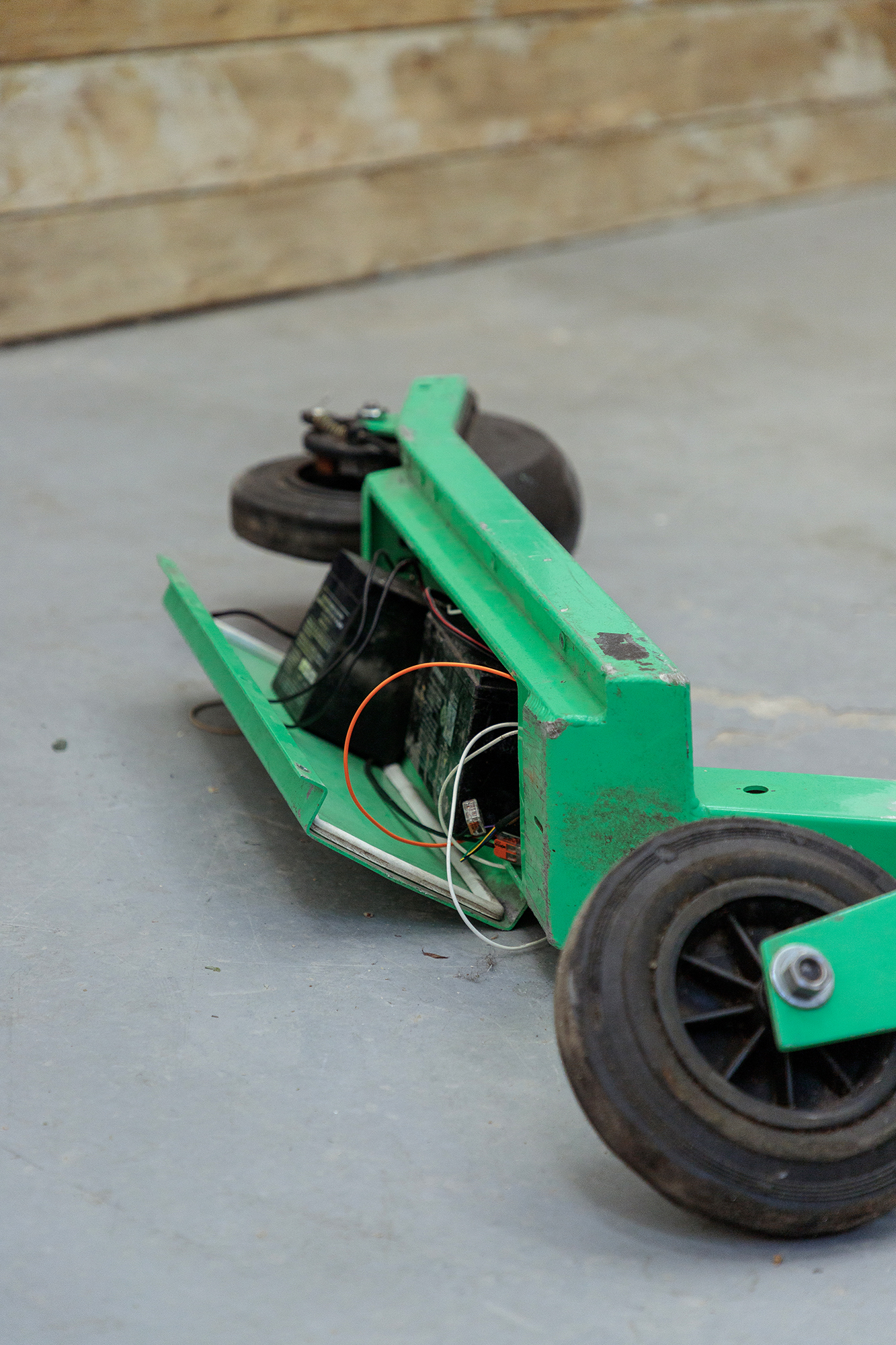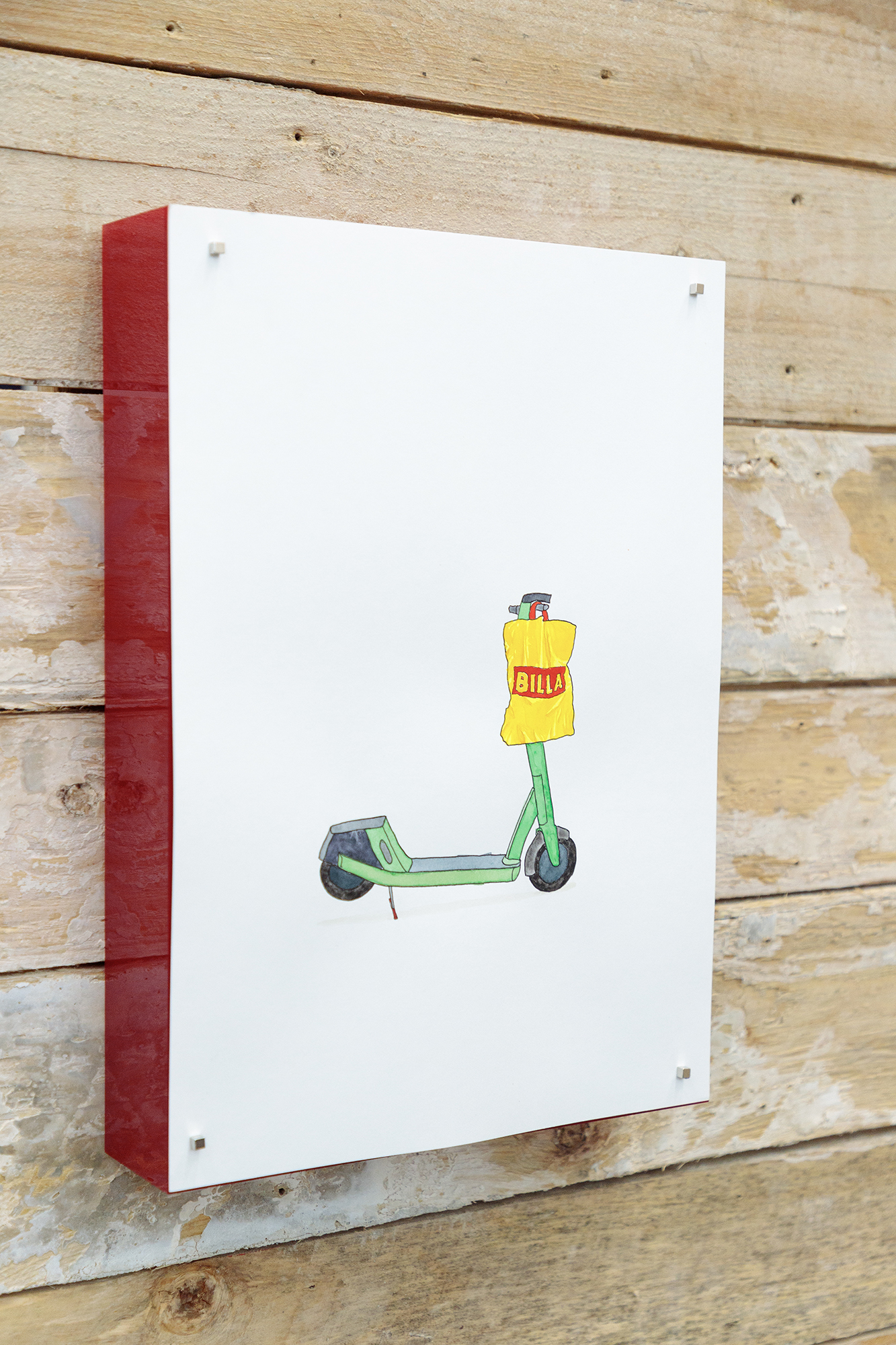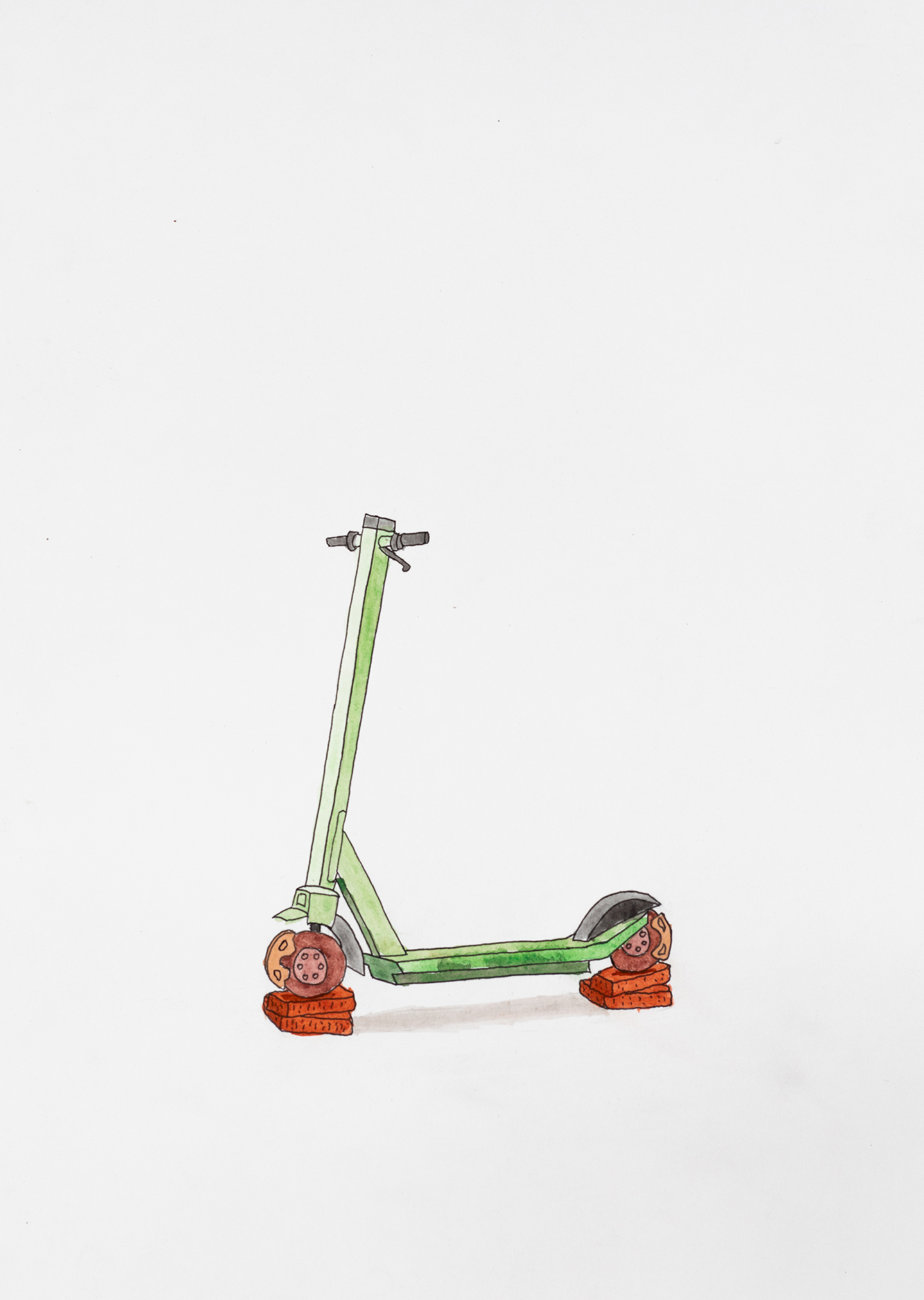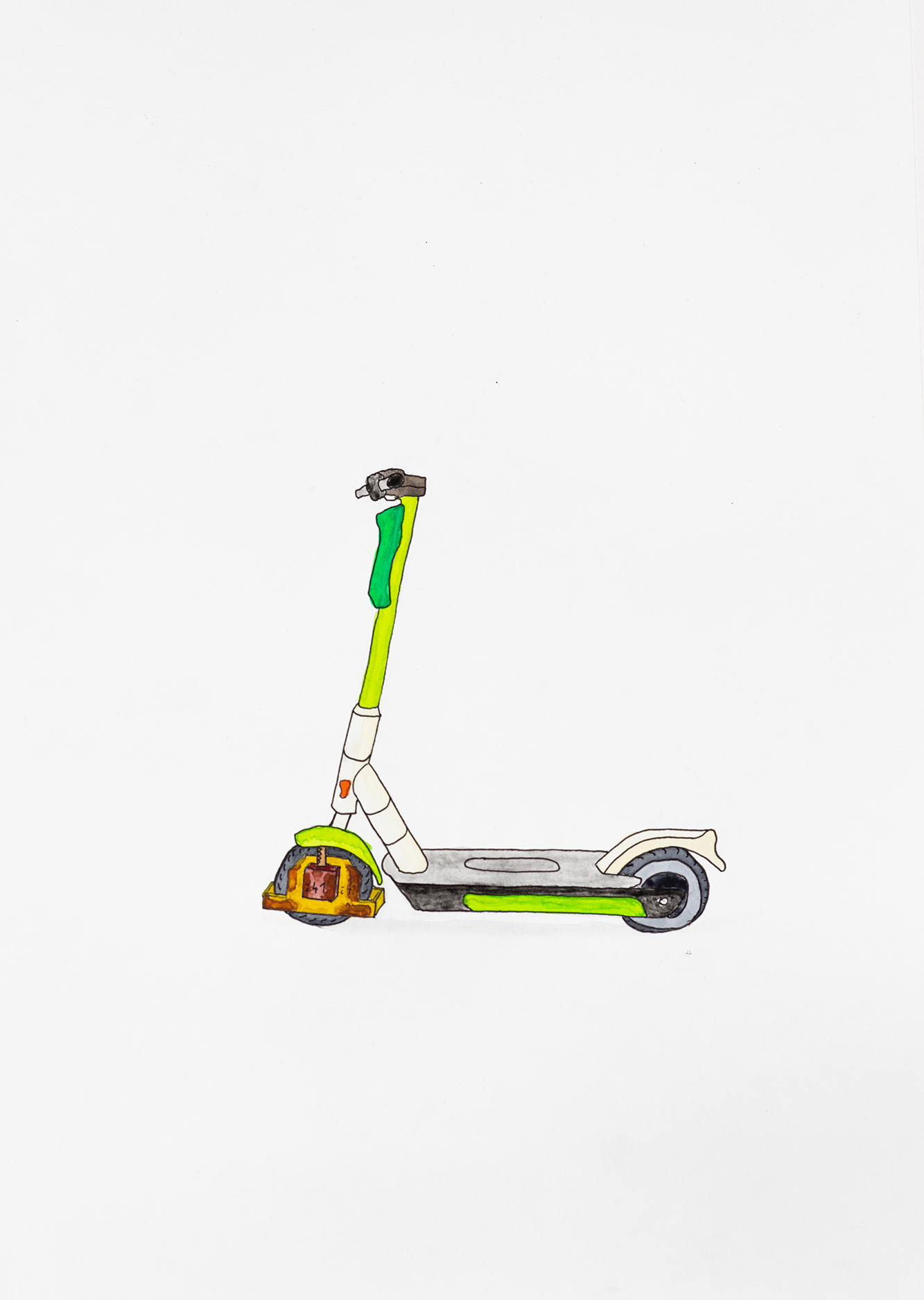

*BEEP* Credit card declined
2023, installation, diorama, watercolor drawings
The electricity in scooters can be considered as a potential resource that could be utilized in case the electrical infrastructure fails. The battery can be used as a power source for lighting, cooking canned beans, or powering essential medical devices. This contrast between a high-tech utopian vision of urban transport and a dystopian DIY use by ordinary people, who find vital practicality in it, has become a cynical archetype in dystopian sci-fi. However, it offers intriguing perspectives on thinking about a future that collapses into the present. In the installation, scooter hides another contradiction in it. An electric scooter charges a toy train model that runs on tracks. The theme of transportation is present, just on a different scale (both physical and mental). For example, a child has much more sincere intentions with objects than the companies operating scooter rentals. The electricity is seemingly converted into another banal use, a simple play. The interest in modeling and scaled-down versions of real things hides another layer beyond just a play: our ability to influence the object of the train. We can pack it up, unpack it, move it, start it, stop it; this power substitutes for our helplessness over the much more complex and dense world that exists on a 1:1 scale.
Scooters cannot be seen as an isolated event; their presence in public space is built on several assumptions and contexts: mobile payment technology, the vast technological startup market, sufficient battery performance, legislation and laws, and the demand in an accelerated society, which led to the existence of scooters in cities. The most visible component of this phenomenon, which is perhaps also the most criticized, is the ease of renting a scooter, allowing drunk people, arrogant drivers, or those unfamiliar with traffic habits to ride. However, more interesting are the hidden mechanisms beneath the problem, such as the human element of maintenance in a seemingly automated and carefree technology. One type of scooter, for example, does not have replaceable batteries, so they have to be collected from the streets in their entirety at night. To make it financially worthwhile, collectors gather them in large diesel vans and return them charged to the streets in the morning. Another unseen mechanism is the trap for techno-optimists, who placed hope in the shared economy to diffuse financial gains among ordinary people, rather than being accumulated solely by corporate firms. However, the current direction of the shared economy suggests a return to the old model. The most profitable remain the companies that own the technology, or in the case of scooters, own the product itself, with the service merely masked as a shared economy. Another mechanism in the object of electric scooters is the very electric energy. This adds an aura of convenience, laziness, and a certain complacency. The entire model of shared scooters is perfectly tailored to today's machinery, where the most efficient profit is possible with the least concern and responsibility for any other aspects than profit. The uniformity and mechanization only contribute to the loss of individual power over public space, which becomes merely a passive actor.







